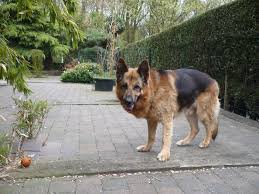OLD GERMAN SHEPHERD DOG
HISTORY:
In Germany prior to the 1890’s, any dog used for the purpose of herding and protecting sheep was known as a “German Shepherd Dog”. Throughout the 18th and 19th centuries, shepherding was a relatively common way of life. The typical role of the shepherds dog in earning his keep during this period was to assist in moving the sheep from one area to the next and to protect the shepherds flock for predators. During this time breeding was largely a localized affair handled by individual shepherds in small geographically isolated communities where individual dogs were selected and bred based on performance and ability. Although this method was successful in creating a number of very capable herding and livestock protection dogs; there was no uniformity from one locale to the next. As such, the dogs from one region tended to be significantly different from those of another, both in appearance and ability.
This practice changed with the foundation of the Society for the German Shepherd (Dog Verein für Deutsche Schäferhunde) commonly abbreviated SV, by Captain Max Emil Friedrich von Stephanitz on April 22, 1899. The father of the modern German Shepherd Dog, Von Stephanitz began breeding and more importantly recording the results of his breedings in the original “Studbook for the German Shepherd Dog” (Zuchtbuch fur Deutsche Schaferhunde), abbreviated as SZ, in order to create the absolute best dog for all situations and locales. The first entry into the SZ was a dog named Horand von Grafrath (the foundation dog for the Modern German Shepherd), who is noted in the studbook as SZ 1 (breed number 1). Following this initial entry into the studbook all of the previous non-uniform German herding dogs would be referred to as Altdeutsche Schäferhunde (Old German Shepherd Dogs) while what would become the modern version of the breed would forever claim the name of German Shepherd Dog.







Comments
Post a Comment